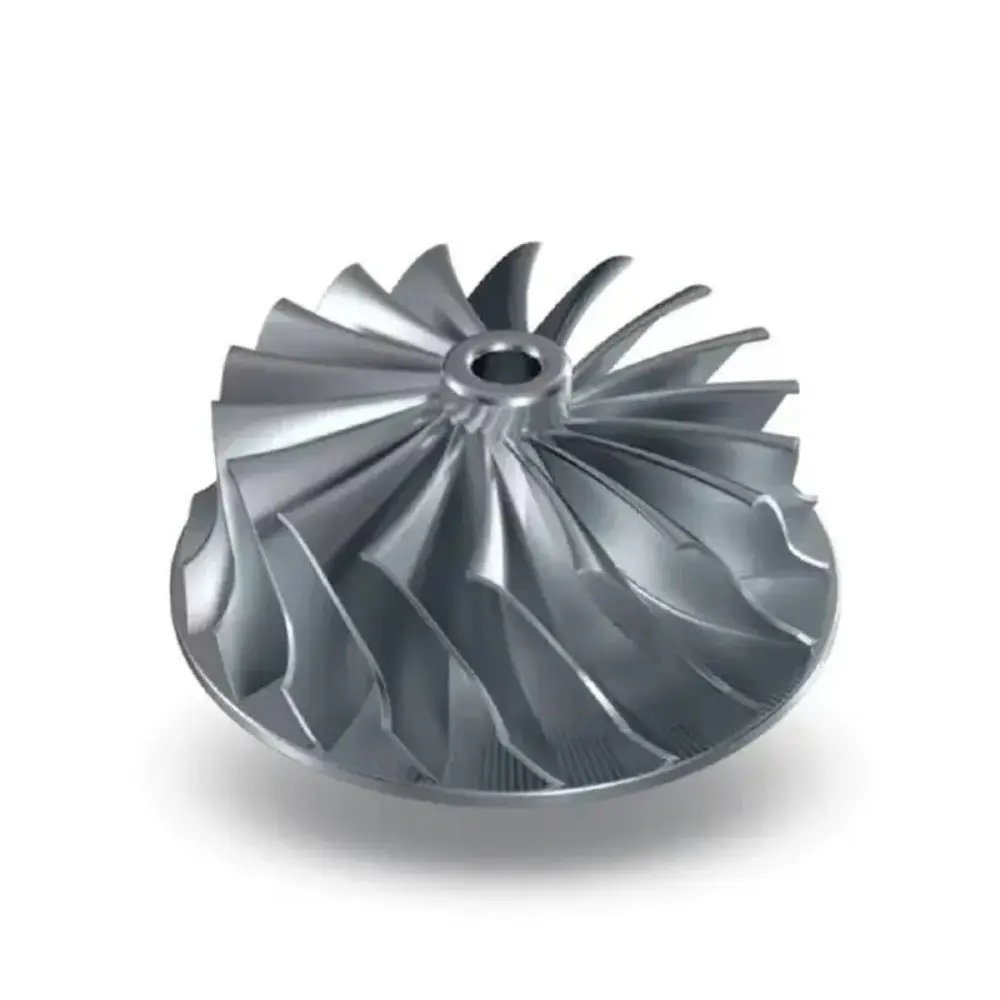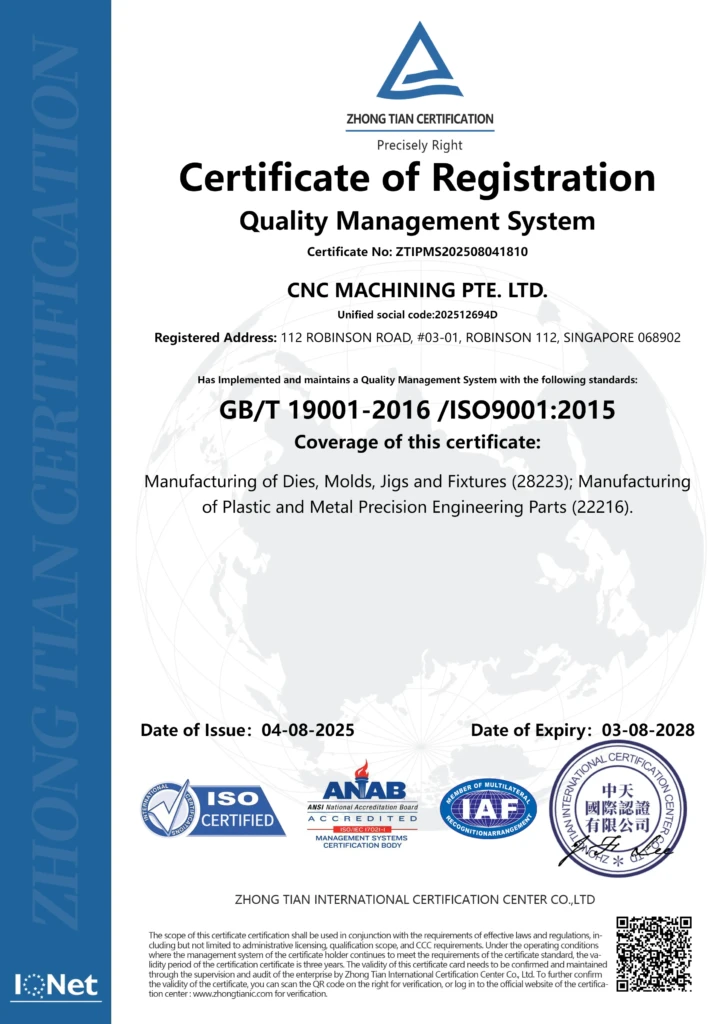CNC Machining Prototype: 7 Essential DFM Tips for Precision and Efficiency
When it comes to developing a CNC machining prototype, success hinges on more than just a great idea—it’s about designing with manufacturing in mind. For engineers tweaking intricate designs, purchasers managing budgets, startup owners racing to market, and multinational leaders scaling production, Design for Manufacturing (DFM) is the key to bridging the gap between concept and reality. At CNC MACHINING PTE. LTD, a premier 5-axis CNC machining factory, we specialize in turning complex CAD designs into high-quality metal parts with precision and speed. In this in-depth guide, we’ll explore seven critical DFM rules to optimize your CNC machining prototype process, complete with practical tips and CAD-inspired insights. Let’s get started.
The Power of DFM in CNC Machining Prototypes
DFM isn’t just a checklist—it’s a mindset that ensures your prototype is manufacturable, cost-effective, and reliable. Ignoring DFM can lead to:
- Excess Costs: Overly complex features increase machining time and tool wear.
- Delays: Designs misaligned with CNC capabilities require rework or redesign.
- Quality Risks: Parts may fail under stress or fall short of specifications.
By mastering these seven DFM principles, you’ll streamline production, reduce waste, and accelerate your timeline. Drawing from our experience at CNC MACHINING PTE. LTD, where we process everything from aluminum to titanium with 5-axis CNC machining, we’ve distilled these tips to help you succeed—whether you’re prototyping a single component or preparing for mass production.
DFM Rule 1: Wall Thickness Minima—Build Strong, Build Smart
Thin walls might look sleek on a CAD design, but in CNC machining, they’re a recipe for trouble. Vibration, tool deflection, and material failure can derail your prototype. Here’s how to design walls that work:
Wall Thickness Guidelines
- Aluminum: Aim for 1.0 mm on small parts, scaling to 1.5 mm for larger components to maintain rigidity.
- Stainless Steel: Start at 1.5 mm to counter warping under heat and stress.
- Titanium: Use 2.0 mm as a baseline due to its high strength and machining resistance.
CAD Insight
Imagine a CNC machining prototype of a drone frame. The base features 2.5 mm walls for stability, tapering to 1.2 mm at the arms. This balance minimizes weight while ensuring the part survives milling without cracking.
Practical Tip
Design walls at least 1.5 times thicker than your tool’s cutting edge (e.g., 1.5 mm for a 1 mm tool) to reduce chatter. For ultra-thin sections, consult with us at CNC MACHINING PTE. LTD—we can explore hybrid solutions like EDM integration.
DFM Rule 2: Radius Guidelines—Corners That Cut Costs
Sharp internal corners are a machining myth—they don’t exist in practical CNC machining prototypes. Tools like end mills naturally leave radii, so designing with this in mind saves time and money.
Radius Recommendations
- Internal Corners: Use a radius of at least 1/3 the wall height (e.g., 2 mm for a 6 mm wall).
- External Edges: A 0.5 mm radius reduces burrs and improves safety during handling.
CAD Insight
Picture a gearbox casing in your CAD design. Each internal pocket has a 3 mm radius, aligning with a standard 6 mm end mill. This tweak cuts machining time by 15% and extends tool life.
Practical Tip
Match radii to common tool sizes (3 mm, 6 mm, 10 mm) to avoid custom tooling. For complex geometries, our 5-axis CNC machining at CNC MACHINING PTE. LTD can handle tighter radii with precision.
DFM Rule 3: Hole Depth-to-Diameter Ratios—Drill Deep, Drill Right
Deep, narrow holes test the limits of CNC machining. Tool breakage, chip buildup, and poor finishes are common pitfalls. Stick to these ratios for success:
Depth-to-Diameter Ratios
- Standard Holes: Keep it at 4:1 (e.g., a 10 mm hole up to 40 mm deep).
- High-Precision Holes: Tighten to 3:1 for better accuracy and finish.
CAD Insight
Visualize a pump housing with 6 mm holes drilled to 18 mm deep (3:1 ratio). This design ensures clean bores without compromising the part’s integrity.
Practical Tip
For holes exceeding 4:1, use peck drilling cycles to clear chips. At CNC MACHINING PTE. LTD, our advanced tooling can push these limits—reach out for a custom solution.
DFM Rule 4: Draft Angles—Simplify the Complex
Draft angles aren’t just for injection molding—they enhance CNC machining prototypes by reducing tool wear and improving surface quality on vertical features.
Draft Angle Suggestions
- Vertical Faces: 1-2° for easier tool access and chip removal.
- Textured Areas: 3-5° to prevent tool drag and ensure crisp finishes.
CAD Insight
Consider a mold core with 2° draft angles on all sidewalls. This subtle taper cuts machining time by 10% and leaves a polished surface—no post-processing needed.
Practical Tip
Apply draft angles to non-critical surfaces to save costs. For functional faces, maintain flatness and let our 5-axis CNC machining handle the precision.
DFM Rule 5: Undercut Avoidance—Design for Accessibility
Undercuts—features inaccessible by standard tools—complicate CNC machining with extra setups or specialty cutters. Eliminate them where possible.
Strategies to Avoid Undercuts
- Rethink Geometry: Replace blind slots with through-holes or external features.
- Modular Design: Split parts into simpler components for easier machining and assembly.
CAD Insight
Envision a valve body originally designed with internal undercuts. Redesigning it with external mounting flanges removes the need for complex setups, shaving 20% off production time.
Practical Tip
If undercuts are essential (e.g., for snap-fits), leverage our 5-axis CNC machining capabilities at CNC MACHINING PTE. LTD to mill them in one pass.
DFM Rule 6: Text Engraving Specs—Mark It Right
Engraving text for branding or part IDs is common in CNC machining prototypes, but it must balance legibility with machinability.
Text Engraving Guidelines
- Height: Minimum 2 mm for clarity; 3 mm+ for larger parts.
- Depth: 0.2–0.5 mm to avoid excessive tool load.
- Font: Sans-serif (e.g., Arial, Helvetica) for clean cuts.
CAD Insight
Picture a control knob with “ON/OFF” engraved in 3 mm Arial at 0.3 mm depth. The text is sharp, readable, and machined in a single pass.
Practical Tip
Add shallow relief cuts around text to speed engraving and enhance contrast. Our finishing services at CNC MACHINING PTE. LTD can polish it to perfection.
DFM Rule 7: Standardized Features—Efficiency by Design
Standardized features align your CAD design with common tools and processes, cutting costs and lead times.
Standardized Feature Ideas
- Holes: Use metric (M6, M8) or imperial (1/4-20) standards.
- Threads: Opt for widely available pitches like 1.0 mm or 20 TPI.
- Edges: Apply 45° chamfers or 1 mm fillets for consistency.
CAD Insight
Imagine a fixture plate with M10 holes and 1 mm fillets on all edges. These standard features leverage off-the-shelf tools, reducing setup time by 30%.
Practical Tip
Reference ISO or ANSI standards in your CAD design to ensure compatibility. Our team at CNC MACHINING PTE. LTD can validate your choices with a free DFM review.
Why Choose CNC MACHINING PTE. LTD for Your Prototypes?
At CNC MACHINING PTE. LTD, we’re more than a machining shop—we’re your DFM partner. Here’s what sets us apart:
- 5-Axis Expertise: Tackle complex geometries with unmatched precision.
- Material Versatility: From aluminum to exotic alloys, we’ve got you covered.
- End-to-End Service: Machining, finishing, and assembly under one roof.
- Online Convenience: Instant quotes and real-time tracking at your fingertips.
Whether you’re an engineer refining a design, a purchaser optimizing costs, or a startup founder launching a product, our precision CNC machining services deliver tailored solutions.
Real Results: DFM Success Stories
- Startup Breakthrough: A medical device startup slashed costs by 25% after we recommended thicker walls and standardized threads for their CNC machining prototype.
- Corporate Win: A multinational automotive firm avoided a month-long delay by eliminating undercuts with our 5-axis CNC machining expertise.
These outcomes show DFM’s real-world impact—and we’re here to make it happen for you.
Conclusion: Elevate Your CNC Machining Prototype Game
Applying these seven DFM rules—wall thickness, radii, hole ratios, draft angles, undercut avoidance, text specs, and standardized features—transforms your CNC machining prototype process into a lean, efficient pipeline. The result? Lower costs, faster turnarounds, and parts that perform. At CNC MACHINING PTE. LTD, we’re ready to bring your vision to life with our 5-axis CNC machining and expert DFM guidance. Contact us today for a free consultation or start your project online—precision is just a click away.





